<< Previous | Displaying results 451-475 of 6762 for "" | Next >>
Frank's town of Trest in western Moravia had a small Jewish community of 64 members in 1930, and Frank was sometimes beaten up in grade school because of antisemitism. When the Meissners' wooden shoe factory closed, Frank's father turned to the furniture industry. But due to post-World War I economic uncertainty, he lost his livelihood. To support the family, Mrs. Meissner worked as a secretary. 1933-39: Trest was small and didn't have a secondary school, so Frank studied during the week in the…
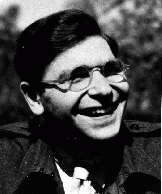
When Agnes was a teenager, she attended Budapest's prestigious Baar Madas private school, run by the Hungarian Reformed Church. Although she was the only Jewish student there, Agnes' parents believed that the superior education at the school was important for their daughter. Agnes' father, a textile importer, encouraged his daughter to think for herself. 1933-39: In 1936 Agnes studied educational techniques with Signora Maria Montessori in Italy and earned a diploma so she could teach. Hoping to improve…
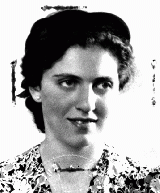
Chaim's family came from a small town where his father owned a textile store. When antisemitic pogroms broke out in Brudzew, the Engels moved to the industrial city of Lodz. Chaim was then 5 years old. In Lodz he attended a Jewish school that also provided a secular education. After finishing middle school, Chaim went to work at his uncle's textile factory. 1933-39: Chaim's neighborhood in Lodz was predominantly Jewish, so most of his friends were Jews. As a young adult he began his compulsory army…
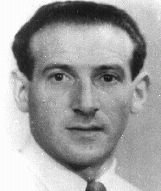
Born to a Jewish family, Willy left Poland at age 20 and emigrated to Palestine. He became active in the workers' organization to end the British mandate there. His activities led to his arrest on May 1, 1931. After serving a two-year prison sentence, Willy was expelled from Palestine. 1933-39: In 1933 Willy left Palestine for Austria, where he joined the ranks of the workers' movement. The economic depression in Austria gave momentum to the movement's cause, and Willy and his friends were closely watched…
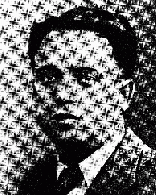
Yves' mother died when he was 7, and he grew up in the home of his grandfather, who was the chief Ashkenazi rabbi of Paris. Yves became a successful businessman, owning a chain of department stores. He was an avid mountain climber and liked to play tennis and to race cars and motorcycles. As a young man, Yves did his military service in France's alpine corps. 1933-39: In 1934 Yves married Paulette Weill, and the couple had two daughters, Nadine in 1935 and Francelyn in 1939. He was called up by the French…

Michael was born in a village in the southeastern part of Galicia, an Austrian province before it became a part of Poland in 1918. Raised by Jewish parents, Michael served as an officer in the Austro-Hungarian army until the end of World War I. After the war, Michael and his Hungarian-Jewish wife settled in Paris, where he became known as Michel. They raised three children there. 1933-39: Michael's family was better off in Paris than they had been in eastern Europe. In Paris, Michael was a successful…
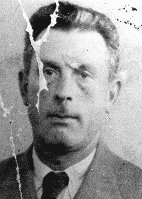
Nadine was the daughter of immigrant Jewish parents. Her Russian-born mother settled in France following the Russian Revolution of 1917. Nadine was born in Boulogne-Billancourt, a city on the outskirts of Paris known for its automobile factories. She was fluent in Russian and French. 1933-39: Nadine attended elementary school in Paris. Her mother, Ludmilla, taught piano, and her Russian grandmother, Rosalia, lived with them. After France declared war on Germany in September 1939, Nadine's mother moved the…
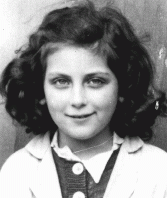
The second oldest of six children, Emma was raised by observant Jewish parents in a small town in southwestern Germany and they settled in the industrial city of Mannheim after World War I. There she had two children, a son in 1924, and a daughter in 1930. Emma helped her husband in his business. 1933-39: After the Nazis came to power, Emma's husband lost his business. Her sister Linnchen immigrated to South Africa, and the Nazis deported her brother Arthur to Dachau. When the Nazis burned down the local…
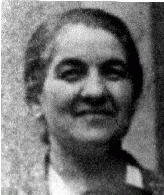
The second oldest of five children, Robert was raised by Jewish parents in a suburb of Mannheim. He was wounded while serving in the German army during World War I. Married after the war and making his home in the industrial city of Mannheim, Robert and his wife Emma raised two children, while he made a living as an interior decorator. 1933-39: The Nazis came to power in 1933; Robert's children were forced out of public school and he lost his business. When the Nazis burned down the local synagogue and…
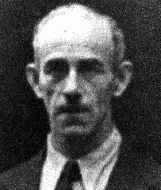
Jacob, known as "Jaap," and his three sisters grew up in Amsterdam in a religious, Zionist Jewish family that could trace its roots in the Netherlands back 200 years. Jaap attended a Jewish elementary school until the age of 12, and then enrolled in a commercial high school, where he studied accounting. After graduating, he took a position in the Amsterdam Carlton Hotel. He worked there in 1931 and 1932. 1933-39: Jaap's life had been centered mostly in the Jewish community, so the Carlton Hotel was a new,…
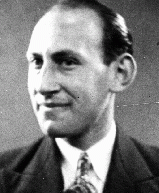
Maria was one of four children born to poor Roma ("Gypsy") parents in the capital of Moldavia in eastern Romania. The family lived in a mixed neighborhood that included Romanians and Roma. Maria grew up in a house with a yard where the family kept a pig and some chickens. Her father made a living by singing and by working at some of the many wineries that dotted the Moldavian countryside. 1933-39: Maria's parents couldn't afford to send her to school. To help make ends meet, Maria, her sister and older…
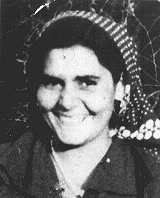
Stefan was born to Romani ("Gypsy") parents in the capital of Moldavia in eastern Romania. The family lived in a mixed neighborhood of Roma and Romanians. Stefan's father made a living playing guitar in local restaurants. As a child, Stefan learned to play the violin and he often performed with his father. 1933-39: When Stefan was a teenager and old enough to branch out on his own, he left his father and teamed up with another young man to perform in restaurants. They performed all over Moldavia. The…
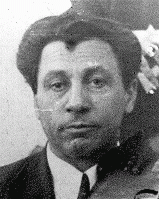
Hansi, as he was called by family and friends, was the third of six children born to Roma ("Gypsy") parents who were Roman Catholic. The family wagon traveled with a caravan that spent winters in Vienna, Austria's capital, and summers in the Austrian countryside. The Stojkas belonged to a tribe called the Lowara Roma, who made their living as itinerant horse traders. 1933-39: Hansi grew up used to freedom, travel and hard work. He was 9 years old and their wagon was parked for the winter in a Vienna…
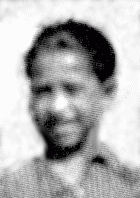
Ceija was the fifth of six children born to Roma ("Gypsy") parents who were Roman Catholic. The Stojka's family wagon traveled with a caravan that spent winters in the Austrian capital of Vienna and summers in the Austrian countryside. The Stojkas belonged to a tribe called the Lowara Roma, who made their living as itinerant horse traders. 1933-39: Ceija grew up used to freedom, travel and hard work. Once, her father made her a skirt out of some material from a broken sunshade. She was 5 years old and…
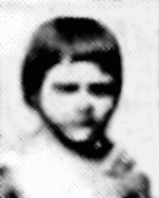
Marie belonged to a tribe of Roma ("Gypsies") called the Lowara Roma who traveled in a caravan and made a living as itinerant horse traders. The caravan spent winters in Vienna, Austria's capital, and summers in the Austrian countryside. When Marie was 18, she married Karl Stojka from the same tribe. Marie's family was Roman Catholic and her ancestors had lived in Austria for more than 200 years. 1933-39: By 1936 Marie had six children. They lived with a caravan, and were used to freedom, travel and hard…
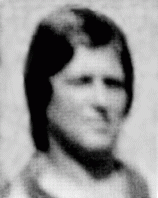
Doriane Kurz’s parents, Klara and Emil Meilech Kurz, settled in Vienna, where her father ran a thriving branch of the family's multinational optical frames business. 1933-39: Doriane was born in Vienna just two years before the Germans annexed Austria in March 1938. Her family fled to the Netherlands soon after the annexation. The Kurz family moved to the town of Maastricht where a branch of the Kurz Brothers' optical frames business was located. Doriane attended nursery school in Maastricht, but the…
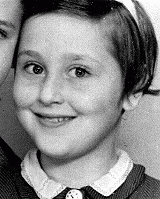
Friedrich-Paul was born in the old trading city of Lübeck in northern Germany. He was 11 when his father was killed in World War I. After his mother died, he and his sister Ina were raised by two elderly aunts. After graduating from school, Friedrich-Paul trained to be a merchant. 1933-39: In January 1937 the SS arrested 230 men in Lübeck under the Nazi-revised criminal code's Paragraph 175, which banned sexual relations between men. Friedrich-Paul was imprisoned for 10 months. In 1938 he was…
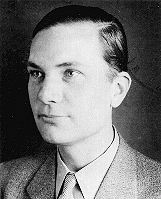
Born Martin Hoyer, Robert took Robert T. Odeman as his stage name when he began a professional career as an actor and musician. A classical pianist, Robert gave concerts throughout Europe, but a hand injury tragically ended his concert career. 1933-39: In 1935 Robert opened a cabaret in Hamburg. One year later the Nazis shut it down, charging that it was politically subversive. Robert then moved to Berlin where he developed a close relationship with a male friend who was pressured to denounce Robert to…
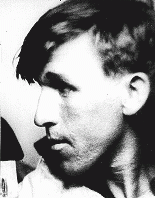
As a young boy growing up in Berlin, Harry developed a love for the theater. At 15 he began acting in minor roles at a theater at the Nollendorfplatz. He was also apprenticed to a hairdresser but disliked the work. He spent most of his time with other actors, both at the theater and in nightclubs where gay men gathered. 1933-39: When the Nazis came to power, they closed the gay bars. Some gay men, especially those who were Jewish, were killed by Nazi sympathizers; Harry's friend "Susi," a drag queen, was…

Karl was born in the north German port of Hamburg. His father was American, and his mother was German. Soon after Karl was born, his father returned to the United States and a little later, his parents were divorced. Karl left school when he was 14 and worked as a shop apprentice. 1933-39: In 1935 an informer told the police about Karl's secret meetings with a 15-year-old youth, and he was arrested under the criminal code's paragraph 175, which defined homosexuality as an "unnatural" act. Though this law…
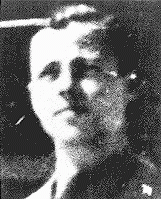
Dezso was from a Jewish family in Hungary's capital, Budapest. His father had been a violinist. Dezso earned a university degree in English, and became a language teacher. He wrote a number of high school grammar textbooks. In 1914 he married Iren Hajdu, who was a mathematician. The couple had two children; a daughter, Eva, born in 1918, and a son, Pal, born seven years later. 1933-39: Dezso fears for the worst now that the antisemitic Prime Minister Teleki has taken power again. Nineteen years ago, in…
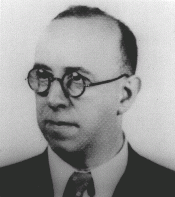
Kornelia was known as Nelly. She was the older of two daughters raised by Jewish parents in the Hungarian capital of Budapest. Her father fought in the Hungarian army during World War I. Kornelia attended public school and later worked as a bookkeeper for a soap factory. In 1928 she married Miksa Deutsch, a businessman who sold matches. 1933-39: Kornelia's husband was religious and the Deutsches' three children attended Jewish schools. Miksa and his brother were the sole distributors in Hungary of…
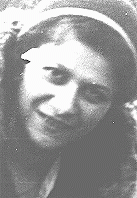
Klara Gottfried Reif's parents, Herschel and Ethel Gottfried, owned a flour mill and a general store in a small Polish town. Klara could speak five languages. As a young woman, she took an interest in fashion, and enjoyed travelling. On a trip to Vienna, she met Dr. Gerson Reif, a young dentist. After marrying in 1925, the couple settled in Vienna and the first of their two children was born in 1927. 1933-39: After the Germans annexed Austria in 1938, they effectively prevented Jewish dentists from…
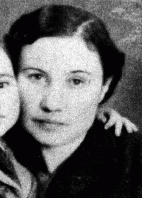
Liane's Polish-born Jewish parents were married in Vienna, where they lived in a 14-room apartment in a middle-class neighborhood near the Danube River. Liane's father, a dentist, had his office in their home. 1933-39: After Germany annexed Austria in 1938, Liane's father was found dead, a probable suicide. In May 1939, four months before war broke out, her mother booked passage on the St. Louis, a ship bound for Cuba. But Cuban authorities turned the ship back. Along with some other refugees from the…
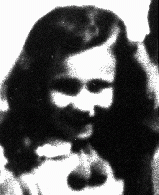
Valtr was the fourth of six children born to Jewish parents in a small Moravian town, where his father ran a dry-goods and clothing store. The Krakauers spoke both Czech and German at home. Valtr attended German-language schools and also played soccer for the Maccabi Jewish team. After graduating from secondary school, Valtr enrolled in a fashion-design school in the city of Brno. 1933-39: In Brno, Valtr founded a factory that produced ready-made clothes. He closely followed the rise of Nazism in Germany…
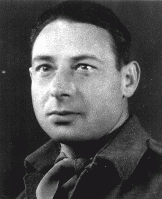
We would like to thank Crown Family Philanthropies, Abe and Ida Cooper Foundation, the Claims Conference, EVZ, and BMF for supporting the ongoing work to create content and resources for the Holocaust Encyclopedia. View the list of donor acknowledgement.